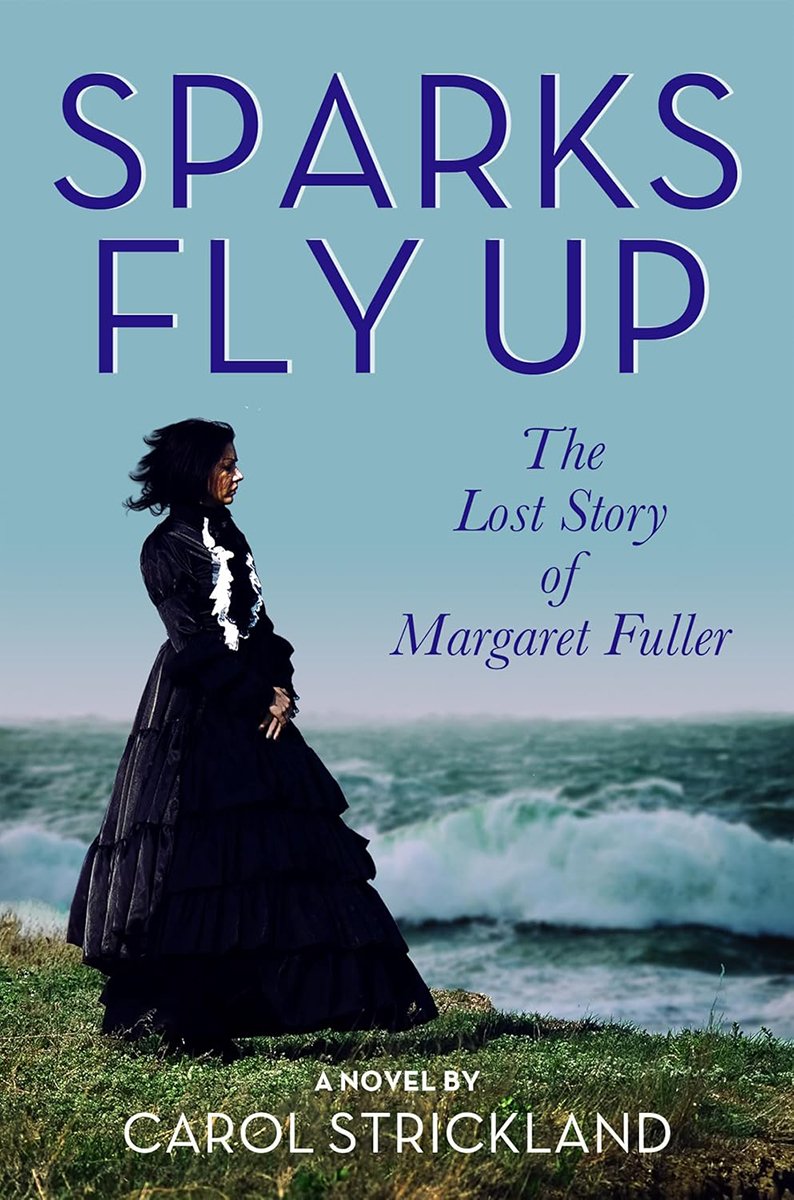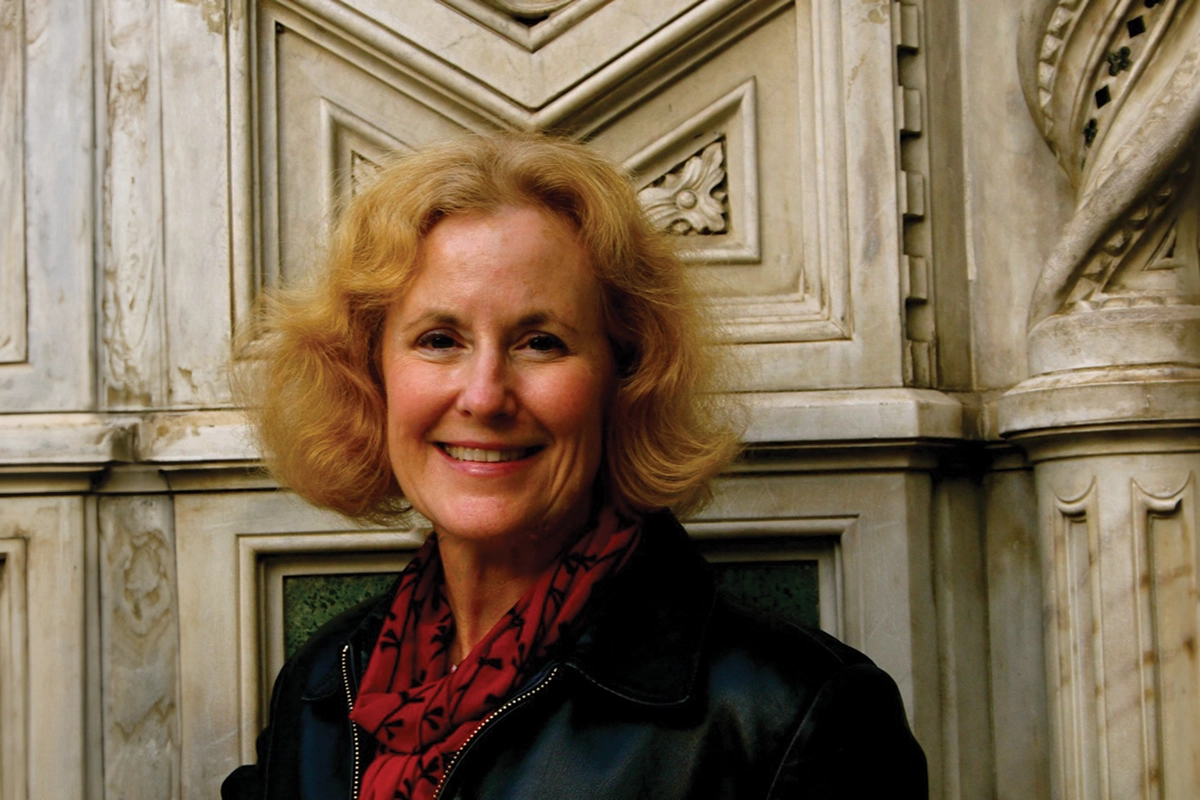Unlocking Creativity Through History And Design
Photo: Author Carol Strickland, acclaimed writer and art historian, on blending research with storytelling to bring history and creativity to life.
Carol Strickland discusses her accessible approach to art, architecture, and historical fiction, blending research, creativity, and passion while sharing insights on writing and engaging readers across genres and formats.
Carol Strickland’s brilliance as a writer and scholar shines through her richly accomplished career, making her one of the most compelling voices in art, architecture, and history today. Her gift lies in her extraordinary ability to transform complex disciplines into narratives that resonate with readers of all backgrounds. Her award-winning book, The Annotated Mona Lisa, has gone on to sell over 400,000 copies, becoming a beloved gateway to art history for readers spanning generations. Her equally celebrated The Annotated Arch transforms architectural milestones into accessible experiences, while her Illustrated Timeline series offers incisive overviews of art and literature that capture centuries of creativity within elegant, concise formats.
Strickland’s talents expand beyond non-fiction through the captivating world of historical fiction. Her novel The Eagle and the Swan vividly explores the extraordinary life of Empress Theodora of the Byzantine Empire, deftly blending fact and imagination to illuminate a woman whose courage and conviction shaped history. Equally enticing is her latest project, Sparks Fly Up: The Lost Story of Margaret Fuller, which promises to restore to life yet another heroine of singular importance.
Through her writing—be it in her Impressionism eBook, which harnesses digital innovation, or her sweeping narratives—Strickland’s approach to storytelling remains consistently visionary. Whether introducing readers to masterpieces of Western art or immersing them in the emotions and interior worlds of historical figures, Strickland demonstrates an unwavering capacity for creativity, clarity, and passion.
In this exclusive conversation with Reader’s House, we delve into the mind and methods of Carol Strickland, exploring what inspires her illuminating works, how she bridges disciplines, and the wisdom she imparts to aspiring writers. From art history to historical fiction, she reminds us of the transformative power of inquiry, imagination, and storytelling—qualities that make her a true treasure in the literary and cultural landscape.
Carol Strickland is a master storyteller who transforms challenging subjects into captivating narratives that inspire curiosity and broaden horizons.
Your 2018 edition of The Annotated Mona Lisa includes a new chapter on contemporary art. What prompted this update, and how did you select which artists to feature?
The demand for an introduction to art history has continued since the first edition in 1992, so I was happy to add 10 more pages in a third edition. I chose contemporary art that catalyzes viewers to feel and think—not just a pretty picture, but works that hold a mirror up to society.
“Art should catalyse viewers to feel and think—not just a pretty picture, but works that hold a mirror up to society.” – Carol Strickland
In The Annotated Arch, you distil architectural history into an accessible format. How do you balance technical detail with readability for a general audience?
I avoid technical jargon and evoke the sensation of experiencing a building—both inside and out. The writing should be simple, not simplistic. Other points: (1) why is this work important and memorable and (2) description should inform and engage.
The Eagle and the Swan explores Empress Theodora’s life. What drew you to her story, and how did you approach blending historical fact with fiction?
I wrote about Istanbul’s amazing cathedral Hagia Sophia, built by Theodora’s husband Emperor Justinian in my Annotated Arch. That piqued my curiosity about Theodora, whose courage saved the Byzantine Empire. Her story of rising from a circus exotic dancer to Empress fascinated me. The history was clear, narrated by a court historian who despised her. I told her side, inventing her thoughts and dialogue.
“In fiction, you go inside characters, imagining their thoughts, feelings, actions, and words.” – – Carol Strickland
Your enhanced eBook Impressionism: A Legacy of Light utilises interactive features. How did digital technology influence your presentation of Impressionist art?
I wanted to approximate a visit to an artist’s studio. With an interactive eBook, the reader can dig deeper into the story behind the art. It’s not a static object like a printed book. To learn more subtext and context on a painting, the reader clicks on other works, bits of biography, or more about the movement or the times. More info is embedded in links.
With over 400,000 copies sold, The Annotated Mona Lisa has reached a wide audience. To what do you attribute its enduring popularity?
I tried to make the book enjoyable and accessible for readers from teenagers to adults, excluding intimidating, dry-as-dust lectures. I used magazine features like sidebars in a non-textbook format called “edu-tainment.” The book is a non-stuffy, non-snobby introduction to art history. I’m happy with being a popularizer: ART FOR ALL!
Your Illustrated Timeline series covers art and literature. What challenges did you face in condensing such vast histories into concise timelines?
The hardest part in selecting art and literature as the “best” in each field was leaving out so much fine work. The books offer a quick review with pictures, a thumb-able overview of a huge subject.
Having written both non-fiction and fiction, how does your creative process differ between these genres, and what unique satisfactions does each provide?
Both nonfiction and historical fiction require prodigious research. In nonfiction, you cover what the reader needs to know about a subject, writing in a style they’ll enjoy. In fiction, you go inside characters, imagining their thoughts, feelings, actions, and words. You use narrative devices like details of setting, dress, and gesture to engage the reader, imply a theme, and make characters come alive. Fiction requires more creativity. Rather than describing ideas and external things that exist, you imagine a world.
What advice would you offer aspiring authors aiming to make complex subjects engaging and accessible to a broad readership?
Write clearly and conversationally about something you care about. You can transmit your passion for a subject through words. Structure, flow, facts, and logic are important. So is emotion.
EDITOR’S CHOICE
A spellbinding portrait of Margaret Fuller—Carol Strickland vividly illuminates her brilliance, audacity, and the timeless relevance of her story.



